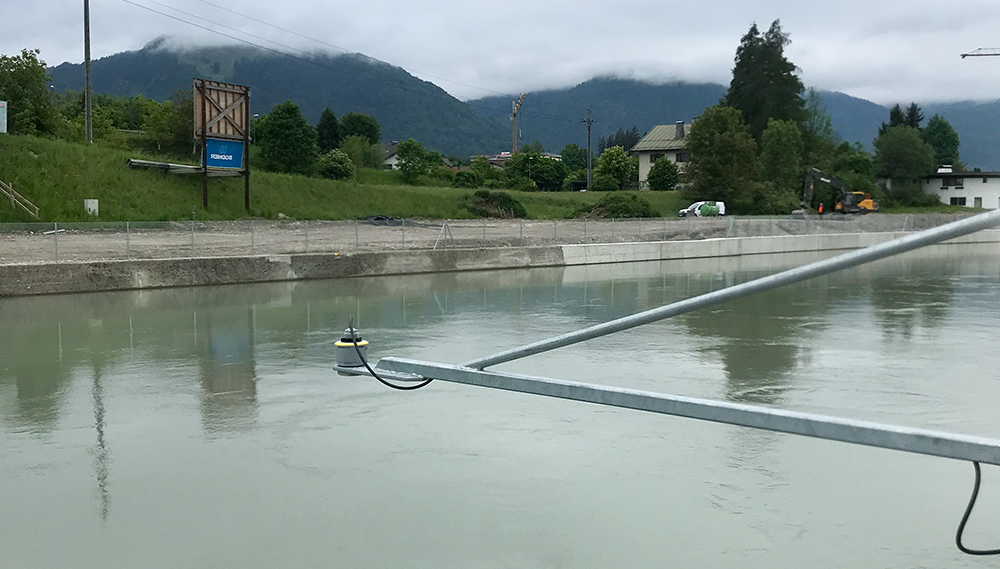
Challenges and Limitations of Acoustic Tomography in Water Data Measuring
Introduction:
Acoustic tomography has emerged as a promising technique for measuring and monitoring water data, providing valuable insights into the subsurface characteristics of water bodies. By utilizing sound waves and their interaction with the medium, acoustic tomography offers a non-invasive and efficient method to gather information about water quality, flow patterns, and other important parameters. However, despite its numerous advantages, this technique also faces several challenges and limitations that need to be addressed. In this blog, we will explore these challenges and limitations, shedding light on the areas where improvements are needed.
Limited Penetration Depth:
To overcome the limited penetration depth of acoustic tomography, researchers are exploring innovative techniques and technologies. One approach is to employ multi-frequency or multi-beam systems. Multi-frequency tomography involves using sound waves at different frequencies to penetrate deeper into the water column. By analyzing the responses at various frequencies, it becomes possible to reconstruct a more detailed picture of the subsurface features.
Another technique is multi-beam tomography, which uses an array of transducers to emit and receive sound waves from multiple directions simultaneously. This approach provides a wider coverage area and improves spatial resolution, allowing for a more comprehensive assessment of the underwater environment.
Advancements in sensor technology and data processing algorithms have also contributed to extending the penetration depth of acoustic tomography. Sophisticated signal processing techniques can enhance the received signals, reduce noise, and extract valuable information from weak and attenuated signals.
Furthermore, the development of more powerful and efficient transducers has enabled the generation of higher-intensity sound waves, which can penetrate deeper into the water column before attenuating significantly.
While these approaches show promise, it is important to note that overcoming the limited penetration depth of acoustic tomography remains a complex and ongoing research endeavor. Continued advancements in technology and methodologies will be crucial in unlocking the full potential of acoustic tomography for studying deep water bodies and monitoring subsurface features in the future.
Signal Distortion and Noise:
Signal distortion and noise pose significant challenges in acoustic tomography. Background noise from sources such as vessel traffic, marine life, or natural phenomena can interfere with the acoustic signals, leading to degraded data quality. Additionally, signal distortion can occur due to reflections, refractions, and scattering of sound waves as they interact with the underwater environment.
To address these issues, researchers are developing advanced signal processing algorithms and noise-cancellation techniques. These methods aim to enhance the received signals, reduce background noise, and extract valuable information from the distorted data. Sophisticated algorithms can differentiate between desired signals and noise, allowing for better signal extraction and analysis.
Furthermore, the use of adaptive beamforming techniques can help in focusing the transmitted and received signals in specific directions, minimizing the impact of unwanted noise sources. By steering the beam towards the desired target and nulling out interfering noise, the signal-to-noise ratio can be improved, resulting in more accurate measurements.
In addition to signal processing techniques, careful site selection and deployment strategies can also help mitigate the effects of noise and signal distortion. Choosing locations with lower ambient noise levels or employing acoustic barriers can reduce the impact of external noise sources on the measurements.
By addressing signal distortion and noise challenges through advanced signal processing, beamforming techniques, and strategic deployment, researchers aim to improve the accuracy and reliability of acoustic tomography measurements. These efforts are crucial for obtaining high-quality data and extracting meaningful information about the underwater environment.
Complex Data Interpretation:
Interpreting the data obtained from acoustic tomography involves complex data analysis and reconstruction. Signal processing techniques are used to extract meaningful information about water properties, such as temperature, salinity, or density, from the collected signals. This requires accurate calibration, noise reduction, and careful analysis to ensure the reliability of the derived measurements.
Furthermore, reconstructing a 3D image of the water body from the collected data involves sophisticated algorithms and computational techniques. This process requires mapping the measured signals to specific spatial locations and integrating them to form a coherent picture of the underwater environment.
To simplify the interpretation process, researchers are developing user-friendly software tools and visualization methods. These tools aim to streamline data analysis, provide intuitive visualization of results, and facilitate the extraction of valuable insights. By making the interpretation process more accessible and intuitive, these advancements enable researchers and stakeholders to better understand and utilize the information obtained from acoustic tomography.
Efforts to improve data interpretation and visualization are crucial for maximizing the potential of acoustic tomography in various applications, including environmental monitoring, oceanographic research, and resource management. By enhancing the accessibility and usability of the technique, more users can effectively utilize the data and contribute to a deeper understanding of the underwater world.
Calibration and Validation:
Calibration and validation play a vital role in maintaining the accuracy and credibility of acoustic tomography measurements. Calibration involves carefully calibrating the instruments used in the system to ensure accurate and consistent readings. This process typically involves standard reference measurements and meticulous adjustments to account for any systematic errors.
Validation is equally important, as it involves comparing the acquired data from the acoustic tomography system with ground truth measurements or independent data sources. This validation process helps assess the reliability and accuracy of the obtained results, identifying any potential biases or discrepancies.
To establish the credibility of acoustic tomography as a robust water data measuring technique, it is crucial to standardize calibration procedures and establish rigorous validation protocols. Consistent and standardized calibration practices ensure that measurements are traceable and comparable, while thorough validation procedures provide confidence in the accuracy and reliability of the collected data.
By prioritizing calibration and validation, researchers and stakeholders can have greater confidence in the measurements obtained through acoustic tomography, enabling more accurate and meaningful analysis of water properties and supporting informed decision-making in various fields such as environmental monitoring, oceanography, and resource management.
Environmental Interference:
Environmental interference poses a significant challenge in acoustic tomography measurements. Factors such as temperature gradients, turbidity, and water currents can introduce uncertainties and errors in the data. These interferences can affect the speed and direction of sound waves, leading to inaccuracies in the measurements.
It is crucial to understand and quantify the influence of these environmental factors on the acoustic signals. Researchers are developing correction algorithms to mitigate these interferences and improve the reliability of acoustic tomography in measuring water data. By accounting for and compensating for environmental interference, the accuracy and consistency of the collected data can be enhanced, enabling more reliable analysis and interpretation of underwater phenomena.
Cost and Accessibility:
The cost associated with acoustic tomography systems can be a barrier to their widespread adoption. The high expenses involved in acquiring and maintaining the necessary equipment, as well as the need for specialized training and data processing software, limit accessibility to researchers and organizations with sufficient resources.
To address this challenge, there is a growing focus on reducing the cost of acoustic tomography systems. This includes the development of more affordable and compact equipment that can be easily deployed in the field. Portable systems offer flexibility and accessibility, enabling measurements in various locations and expanding the user base.
In addition to cost reduction, efforts are being made to enhance user-friendly interfaces and simplify data processing. Intuitive software tools and streamlined workflows can help users navigate the complexities of acoustic tomography, making it more accessible to a broader range of researchers and stakeholders.
By addressing cost constraints and improving accessibility, the potential for acoustic tomography to contribute to fields such as environmental monitoring, oceanography, and resource management can be maximized. Increased accessibility would foster broader participation, leading to a greater understanding of underwater environments and their dynamics.
Limited Spatial Resolution:
The spatial resolution of acoustic tomography is determined by factors such as the frequency of sound waves, beamforming techniques, and the number and arrangement of transducers. Achieving high-resolution imaging of water bodies, especially in heterogeneous environments, can be challenging. Advancements in transducer technology, beamforming algorithms, and system design can enhance the spatial resolution and provide more detailed information about water properties.
Conclusion:
Acoustic tomography holds great potential for water data measuring, offering valuable insights into the subsurface characteristics of water bodies. However, it is crucial to acknowledge and address the challenges and limitations associated with this technique. By focusing on improving penetration depth, reducing signal distortion and noise, enhancing data interpretation, addressing calibration and validation issues, considering environmental interferences, increasing accessibility, and enhancing spatial resolution, we can overcome these challenges and unlock the full potential of acoustic tomography in water data measuring. Continued research, innovation, and collaboration among scientists, engineers, and policymakers are vital to drive advancements in this field and ensure the effective management and conservation of our water resources.
